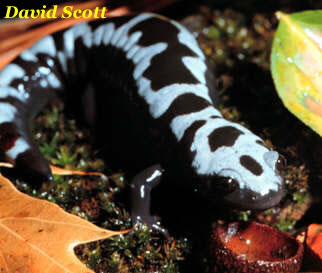Hello everybody and welcome to the new Biology Department Blog,
This blog is maintain by graduate students and will represent a new communication platform for the department. Our objective is to promote and advertise the successes in the department, providing an opportunity for all of us to share the word about biology here at UK via our favorite ways (Twitter, Facebook, etc.).
Without further due, let’s get started with this year big accomplishment: three graduate students were funded through the NSF-DDIG (National Science Foundation – Doctoral Dissertation Improvement Grant) earlier this year. You will find below their respective lay summary, each one of these projects look super cool and we can’t wait to see the results of their efforts!
One last thing, this blog will live only if we all make it happen, so feel free to share the page on social networks (or in more classic ways like email). Additionally, if you have any news you’d like to share, let us know by contacting Luc Dunoyer (luc_dot_dunoyer_at_uky_dot_edu).

Schyler O. Nunziata
This project will contrast the utility of population size estimates and migration estimates in predicting population declines and increases. It is known that populations that are too small can experience high levels of inbreeding and may lose much of their genetic diversity over time. In turn they may face higher extinction probabilities and for this reason population size could be a critical variable in many conservation plans. Population size, however, may be a poor predictor of a population's viability when additional forces are at play. Migration between locations as well as climate induced fluctuations in a population from year to year may be just as important as the average population size in predicting long term trends in a population's likelihood of survival. The researchers will examine the relative effectiveness of average population size, migration between populations and population variability in predicting the viability of populations of two salamander species. The project will develop more informative genetic monitoring techniques as well as the training of a doctoral student.

Life on Earth traces its origins back to a single common ancestor that lived nearly four billion years ago. Yet today, life has diversified into tens of millions of species. Reconstructing these evolutionary relationships is the aim of phylogenetics, and its insights are critical to nearly all areas of biology. The genomics revolution is radically altering the historically data-limited field of molecular phylogenetics and genome-scale data are now easily generated for any organism. Yet, simply collecting more genetic data, on its own, will not be sufficient to resolve difficult branches on the Tree of Life because some genes will support different evolutionary histories than others. This project addresses the questions of which genes and which DNA positions in those genes are most informative for resolving deep amphibian relationships, and conversely, which may be misleading. Amphibians (frogs, salamanders, and caecilians) are an ancient and diverse group typifying many of the difficulties of reconstructing deep phylogeny. The relationships among the three amphibian orders have proven one of the most difficult portions of the vertebrate phylogeny to resolve. This work may serve as a general framework for tackling thorny problems in phylogenetics and builds important avenues for graduate training in bioinformatics, high-throughput sequencing analysis, and model-based phylogenetic reconstruction - key skills in this post-genomic era. The research will integrate undergraduate researchers from traditionally under-represented groups across rural Appalachia and Kentucky. This research is of broad interest to evolutionary biologists working on amphibians, and stands to make important contributions to amphibian systematics. It addresses questions about how we analyze genomic data to accurately reconstruct deep evolutionary relationships. The researchers will test hypotheses about the source of conflicting phylogenetic signals from mitochondrial and nuclear genomes by analyzing site-specific patterns of topological support across nuclear genes that interact with the mitochondrion and ribosomes. The researchers will use a well-developed amphibian system in which previous analyses of complete mitochondrial genomes, nuclear ribosomal RNA, and >300 putatively neutral nuclear exons have each strongly supported conflicting scenarios for basal amphibian divergences. This project tests the hypothesis that mitochondrial and ribosomal genes and their nuclear-encoded functional counterparts support the same tree topologies due to compensatory co-evolution between mitochondrial and nuclear genomes. Leveraging genomic resources, the researchers will develop a targeted capture kit to sequence multiple exons of 225 nuclear genes that functionally interact with the mitochondrion and ribosomes in 144 amphibian taxa, representing each major lineage. Examining the relative support for different inter-ordinal topologies across sites in each locus, and with knowledge of which portions of these nuclear loci physically interact with rRNA or mitochondrial-encoded proteins, this project will test whether particular nuclear-encoded genes yield conflicting topologies because of constraints on organellar structure and function.
